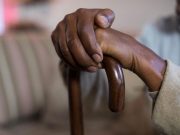Tag: Economic Status
Living in Disadvantaged Neighborhood Shortens Breast Cancer Survival
Findings seen after adjusting for sociodemographics, comorbidity, breast cancer risk factor, access to care, tumor, and guideline-concordant treatment
Black, Poor Patients Present With More Advanced Peripheral Artery Disease
Lower-extremity bypass chronic limb-threatening ischemia increases odds of amputation and other complications
Risk of Relapse Increased With Extreme Poverty in Children With Leukemia
Increased risk of relapse seen for children receiving maintenance treatment for acute lymphoblastic leukemia living in extreme poverty
5.9 Percent of Adults Live in Families Experiencing Food Insecurity
Family food insecurity higher for women than men and three times higher for adults with disabilities
Neighborhood Deprivation Affects Cognitive Outcomes in Patients With Epilepsy
For people with temporal lobe epilepsy, odds of worse cognitive phenotype seen for those in more disadvantaged ADI quintiles
Poor Social Determinants of Health Tied to Vision Loss
Findings similar for both clinically evaluated and self-reported vision loss measures
Hereditary Angioedema Remains Challenge to Diagnose, Treat
Respondents cite economic issues related to treatment, which can be compounded for patients living in rural areas
Interventions Can Cut Socioeconomic Inequities in Child Mental Health
6.5 percent of socioeconomic differences in child mental health problems could be reduced by improving parental mental health
4.7 Percent of Students With Disabilities Experience Homelessness
Highest proportion of students with disabilities experiencing homelessness seen in Washington, D.C., New York
Minimum Unit Pricing for Alcohol Tied to Better Health Outcomes
Findings show decreases in deaths, hospitalizations from alcohol consumption














